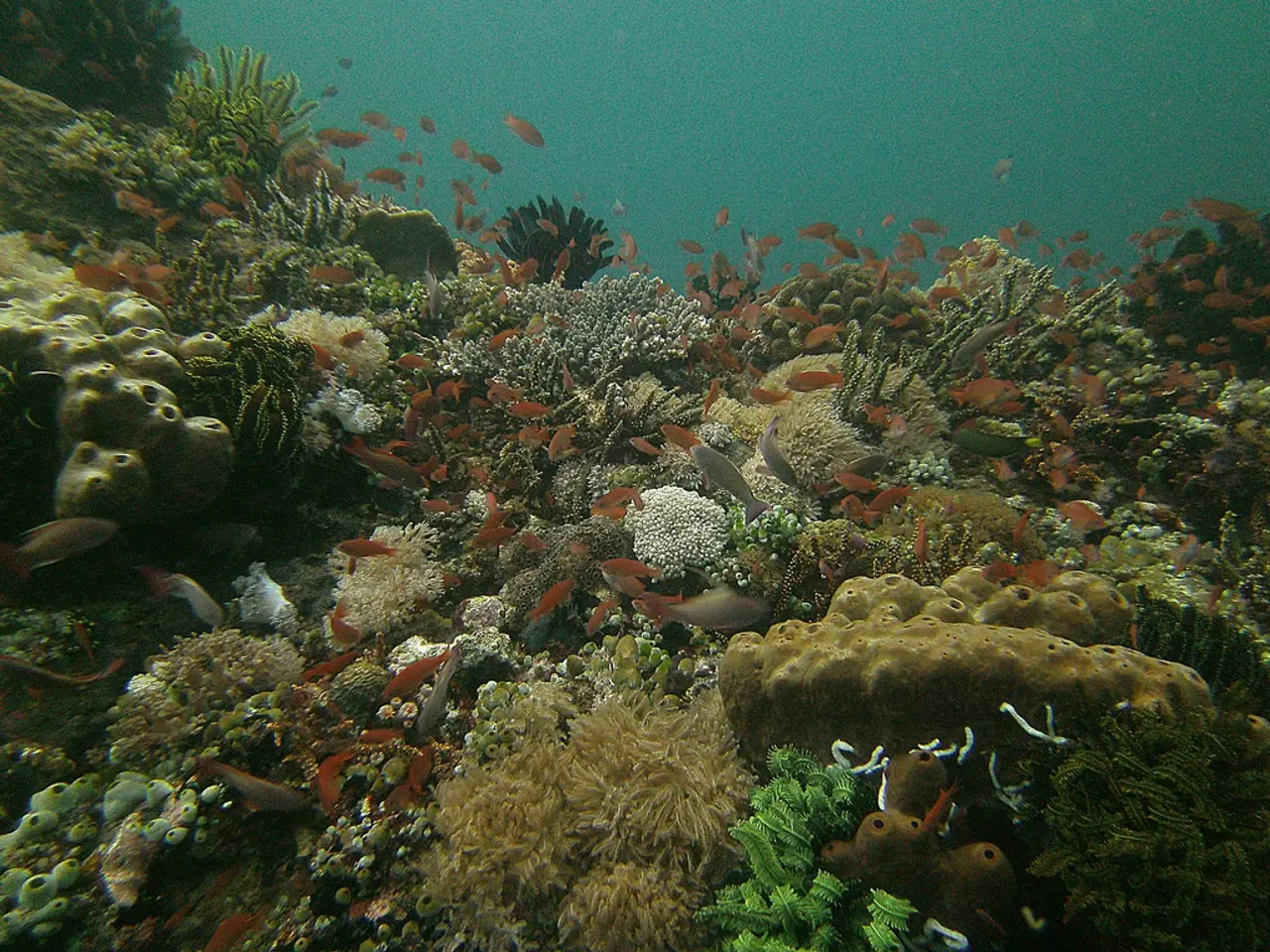Witnessing the uncommon dance of manta ray pair bonding, submerged beneath the ocean depths
Manta rays, the gentle giants of the ocean, have long intrigued marine biologists. A recent study, using a revolutionary piece of technology, has shed new light on their behaviours in the deep sea.
The Role of Technology in Understanding Manta Rays
The study, conducted using Crittercams, has highlighted the importance of technology in understanding manta rays' behaviours. Crittercams are small, lightweight cameras equipped with depth and temperature sensors, which can be attached to animals to record their activities in their natural habitats. These devices have been instrumental in capturing footage that traditional observation methods could not.
Exploring the Depths of Manta Ray Courtship
The study recorded new deep-sea behaviours, including manta rays hugging the bottom of the seabed, a behaviour that may reduce predation risk, improve hydrodynamics, or navigate using the Earth's magnetic field. The study also documented the deepest recorded manta courtship train, with new footage showing manta rays barrel rolling in deep waters, which could indicate courtship.
The Challenges of Studying Manta Rays
Adapting Crittercams for manta rays proved challenging due to their mucus-covered dermal denticles. In the Maldives, the suction cups used on the Crittercams slid off the manta rays, requiring a different attachment method. Despite these challenges, the study using Crittercams also documented the behaviours of devil rays during a wild mating ritual.
The Future of Manta Ray Research
The study's findings suggest that further studies using 360 cameras could provide more insights into manta rays' social behaviours. As the use of technology continues to evolve, so too will our understanding of these fascinating creatures.
Greg Marshall, the inventor of Crittercams, continues to feel inspired and privileged when his devices capture new glimpses of animal behaviours. The footage captured by Crittercams revealed 7 sea creatures that are remarkably unusual, including deep-sea manta rays exhibiting courtship behaviours. This study could help manta rays gain more attention and recognition, similar to sea turtles, dolphins, and whales.
Sustainable Snorkelling Destinations
For those interested in observing manta rays up close, the best sustainable location for snorkelling with whale sharks is Australia's Ningaloo. This region is home to a diverse marine life, including manta rays, and is committed to preserving its ecosystem for future generations.
In conclusion, Crittercams have been significant in studying manta rays’ behaviour by allowing researchers to observe them directly in their natural habitats, especially in deep waters that are otherwise difficult to access. These cameras provide first-person perspectives and detailed behavioural data that traditional observation methods cannot capture. The study's findings expand our understanding of manta ray ecology and underscore the need to protect deep-water habitats to preserve these remarkable creatures and their behaviours for future generations.
- The revolutionary technology, Crittercams, has been essential in shedding light on the behaviors of manta rays in the deep sea, during their expeditions in nature's wilderness.
- The use of 360 cameras in future studies could offer more insights into the social behaviors of manta rays, contributing to conservation efforts and advancing our understanding in environmental-science.
- Manta rays, like sea turtles, dolphins, and whales, could gain more attention and recognition, boosting the environmental-lifestyle movement and increasing efforts to protect their habitats.
- Travellers seeking close encounters with manta rays can visit Ningaloo, Australia, a sustainable snorkelling destination that preserves its marine life for future generations, promoting responsible travel.
- The study in Antarctica, combined with the use of technology like Crittercams, has proven that adventure and science can coexist in the quest for understanding and conserving our planet's diverse species.
- Inspirations from the mysteries of the deep ocean, as revealed by studies and footage captured by technology, might spark curiosity in researchers, travellers, and environmental enthusiasts alike, fostering a deeper connection with nature and fueling a dedication to its preservation.
- The obstacles faced in adapting Crittercams for manta rays demonstrate the challenges and setbacks that come with pushing the boundaries of innovation in the pursuit of knowledge, emphasizing the importance of perseverance in the field of science.




